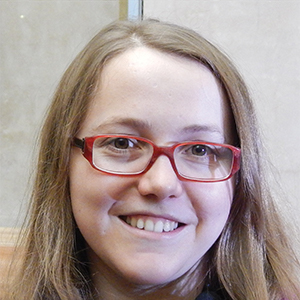Allison focuses on thyroid hormone receptors and equity
When Lizabeth Ann Allison was the biology department chair at William & Mary, she recruited Shantá Hinton as the college’s first minority tenure-track-eligible scientist. Almost a decade later and now a tenured professor, Hinton remembers Allison’s words to her then: “You are scientifically strong, emotionally strong, and I know that you are capable of handling this.”

Allison, now a chancellor professor of biology at W&M, will receive the American Society for Biochemistry and Molecular Biology’s 2020/2021 Ruth Kirschstein Diversity in Science Award. Hinton nominated her for the honor, writing, “She has truly been a trailblazer in serving and changing the dynamics of our institution, and encouraging underrepresented minorities to continue to pursue scientific careers, by supporting our passion for science.”
Allison’s support for diversity stems partially from her own experience in the 1980s when few women were high ranking academic scientists. Without female role models, it was her male predoctoral research mentors who “saw a potential in me that I didn’t know I had,” she said.
She explored many interests as an undergraduate at the University of Alaska, but when those mentors told her she needed to earn a Ph.D. and become a faculty member, science won out over creative writing and theater.
She was the first woman to chair the biology department at W&M; during her tenure, the percentage of underrepresented minority students graduating in biology and neuroscience more than doubled.
Allison has a keen eye for untapped potential. “In my lab, there are some students that would have succeeded in any lab,” she said, “and then there are those students that need just a little bit of extra encouragement to show their true potential; those are the students that most benefit from my mentorship.”
Getting there: Thyroid hormone receptor intracellular trafficking
The butterfly-shaped thyroid gland, located at the base of the neck above the collarbones, uses iodine derived from food together with the amino acid tyrosine to make the hormones thyroxine and triiodothyronine. These two hormones circulate in the blood and are taken up by cells where they bind to thyroid hormone receptors, or TRs, which then can act as transcription factors.
TRs mainly are found in the nucleus but also can be shuttled to the cytosol, and the Allison lab studies the post-translational regulation of the nucleocytoplasmic shuttling of TRs. In a recent paper the group showed that acetylation promotes cytosolic TR localization and affects the ligand-dependent transcriptional activity.
Asked about her interest in this trafficking, Allison said that understanding TR function “gets to be such a complicated story, which is, of course, why I find it all really exciting and fascinating.”
Molecular and cellular biologists sometimes can get lost in all the details. “Although we want to know the nitty gritty of the molecular mechanism,” she said, “we also have to keep a big picture in mind.”
Allison’s lab at William & Mary continues to study how disruptions of TR transport and interactions can lead to endocrine disorders.
Allison will give a lecture tentatively titled “Getting there: thyroid hormone receptor intracellular trafficking” at the ASBMB annual meeting.
Enjoy reading ASBMB Today?
Become a member to receive the print edition four times a year and the digital edition monthly.
Learn moreGet the latest from ASBMB Today
Enter your email address, and we’ll send you a weekly email with recent articles, interviews and more.
Latest in People
People highlights or most popular articles

Sketching, scribbling and scicomm
Graduate student Ari Paiz describes how her love of science and art blend to make her an effective science communicator.

Embrace your neurodivergence and flourish in college
This guide offers practical advice on setting yourself up for success — learn how to leverage campus resources, work with professors and embrace your strengths.

Survival tools for a neurodivergent brain in academia
Working in academia is hard, and being neurodivergent makes it harder. Here are a few tools that may help, from a Ph.D. student with ADHD.

Quieting the static: Building inclusive STEM classrooms
Christin Monroe, an assistant professor of chemistry at Landmark College, offers practical tips to help educators make their classrooms more accessible to neurodivergent scientists.

Hidden strengths of an autistic scientist
Navigating the world of scientific research as an autistic scientist comes with unique challenges —microaggressions, communication hurdles and the constant pressure to conform to social norms, postbaccalaureate student Taylor Stolberg writes.

Richard Silverman to speak at ASBMB 2025
Richard Silverman and Melissa Moore are the featured speakers at the ASBMB annual meeting to be held April 12-15 in Chicago.

